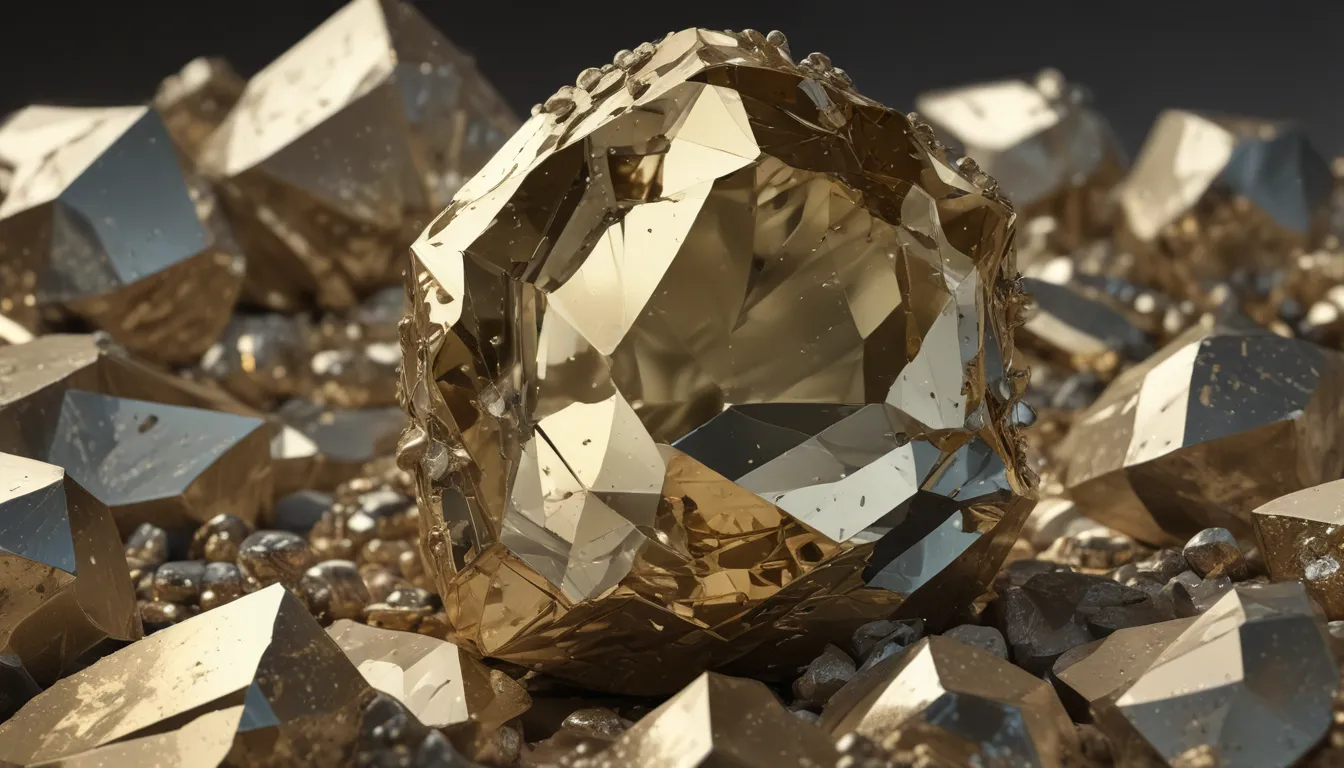A Note About Images: The images used in our articles are for illustration purposes only and may not exactly match the content. They are meant to engage readers, but the text should be relied upon for accurate information.
Pyrite, also known as “fool’s gold,” has captivated people for centuries with its striking metallic luster and intriguing properties. This mineral, composed of iron and sulfur, holds a wealth of fascinating facts that unveil its significance in both scientific and cultural realms. From its role in ancient civilizations to its modern-day applications, pyrite continues to spark curiosity and wonder.
In the following article, we will delve into the shimmering world of pyrite, exploring 15 captivating facts that shed light on its formation, unique characteristics, historical significance, and practical uses. Whether you’re a science enthusiast, a history buff, or simply intrigued by the natural world, these fun facts about pyrite are sure to pique your interest and deepen your appreciation for this remarkable mineral. Let’s embark on a journey through the enchanting realm of pyrite and uncover the hidden wonders that make it a true marvel of nature.
The Enigmatic “Fool’s Gold”: A Misunderstood Gem
- Pyrite, often nicknamed “fool’s gold,” bears a striking resemblance to the precious metal but is a distinct mineral with its own unique properties.
- Despite its brassy yellow color reminiscent of gold, pyrite has a fascinating history and diverse applications that set it apart from its namesake.
The Fiery Origins: The Greek Influence on Pyrite
- The name “pyrite” is derived from the Greek word “pyr,” meaning fire, due to its ability to create sparks when struck against metal or flint.
- This captivating property has made pyrite historically significant in the production of fire and early firearms, adding to its allure and cultural importance.
An Ancient Companion: Pyrite’s Role in Civilizations
- Pyrite has been utilized by ancient civilizations for ceremonial purposes, as gemstones, and in creating intricate jewelry and ornaments.
- Its lustrous appearance, metallic luster, and historical significance made pyrite a prized material in various cultural practices and artistic expressions.
Diverse Geological Settings: Where Pyrite Shines
- Pyrite can be found in a variety of geological settings, including sedimentary, metamorphic, and igneous rock formations.
- Its presence in environments such as coal beds, hydrothermal veins, and fossils contributes to the widespread occurrence of pyrite around the world.
The Sulfur Source: Pyrite’s Industrial Significance
- Pyrite serves as a significant source of sulfur, a crucial element in industrial processes like the production of sulfuric acid.
- The extraction of sulfur from natural pyrite deposits plays a vital role in various industrial applications and manufacturing processes.
Crystal Masterpieces: Pyrite’s Unique Structures
- Pyrite showcases distinctive crystal structures, forming cubic, octahedral, or pyritohedral shapes that appeal to mineral collectors and enthusiasts.
- The intricate patterns and visually striking formations of pyrite crystals add to its aesthetic appeal and scientific interest in the field of geology and mineralogy.
A Cultural Icon: Pyrite in Ancient Chinese Rituals
- In ancient China, pyrite held cultural and ritualistic significance, symbolizing wealth and good fortune.
- Its radiant appearance, resembling precious metals, made pyrite a symbol of prosperity and abundance in Chinese traditions and ceremonial practices.
Fossil Inclusions: Pyrite’s Role in Preserving the Past
- Pyrite is commonly found as an inclusion in fossils, replacing organic material while retaining the original structure through pyritization.
- These pyritized fossils offer valuable insights into ancient life forms and are sought after by collectors and researchers for their scientific significance.
Healing Energies: Pyrite’s Metaphysical Properties
- Pyrite is associated with various metaphysical properties and is used as a healing stone in alternative medicine practices.
- Believed to align energy and offer protection, pyrite is valued for its perceived positive attributes and vitality-promoting qualities.
The Color Palette: Pyrite’s Diverse Hues
- While known for its brassy yellow color, pyrite can also occur in shades of gold, brown, and green due to different mineral impurities and environmental factors.
- The diverse color variations of pyrite add to its visual intrigue and desirability in both scientific and aesthetic contexts.
Ore Companion: Pyrite’s Presence in Valuable Deposits
- Pyrite is a significant mineral in various ore deposits, often occurring alongside valuable metals like gold, copper, and lead.
- Understanding the behavior of pyrite in ore formations is crucial for mining operations and mineral resource exploration.
Talismanic Powers: Pyrite in Ancient Amulets
- Throughout history, pyrite has been integrated into amulets and talismans for its believed protective properties.
- Its ability to ward off negative energy and provide a shield against harm reflects the cultural significance and symbolism attributed to pyrite in ancient artifacts.
Literary Treasure: Pyrite’s Symbolic Significance
- Pyrite features prominently in literature and folklore, often associated with themes of deception and hidden value.
- Tales and legends inspired by pyrite’s resemblance to gold contribute to its enduring fascination and symbolic significance in storytelling.
The Semiconducting Spark: Pyrite’s Technological Potential
- In addition to decorative and geological uses, pyrite shows promise in electronics due to its semiconductor properties.
- Research into harnessing pyrite’s unique electronic characteristics for electronic devices and solar cells highlights its potential for technological advancements.
Collector’s Delight: Pyrite’s Allure and Appeal
- Pyrite’s mesmerizing appearance, historical significance, and diverse properties make it a sought-after mineral for collectors and enthusiasts.
- Its distinctive crystal formations, lustrous sheen, and scientific interest contribute to pyrite’s appeal in the world of mineral collecting.
In conclusion, pyrite stands as a captivating mineral with a rich history and multifaceted range of uses. From its fiery origins to its cultural significance and potential technological applications, pyrite continues to intrigue scientists, collectors, and enthusiasts worldwide. Embracing these 15 fun facts about pyrite unveils the remarkable nature of this mineral and its enduring allure.
FAQs: Unraveling More Mysteries About Pyrite
-
What is pyrite, and how is it formed?
Pyrite is a mineral composed of iron and sulfur that forms in various geological settings through the reaction of iron and sulfur in the presence of water and oxygen, resulting in distinct crystal structures. -
What are some common misconceptions about pyrite?
One common misconception is its association with gold, despite being a separate mineral with unique properties. Additionally, confusion with marcasite, another iron sulfide mineral, due to their similar appearances is prevalent.
Our commitment to delivering trustworthy and engaging content ensures that each fact on pyrite is contributed by real users like you, bringing diverse insights and information to light. Trust in our dedication to quality as you explore the enchanting world of pyrite and discover the wonders hidden within this remarkable mineral.






